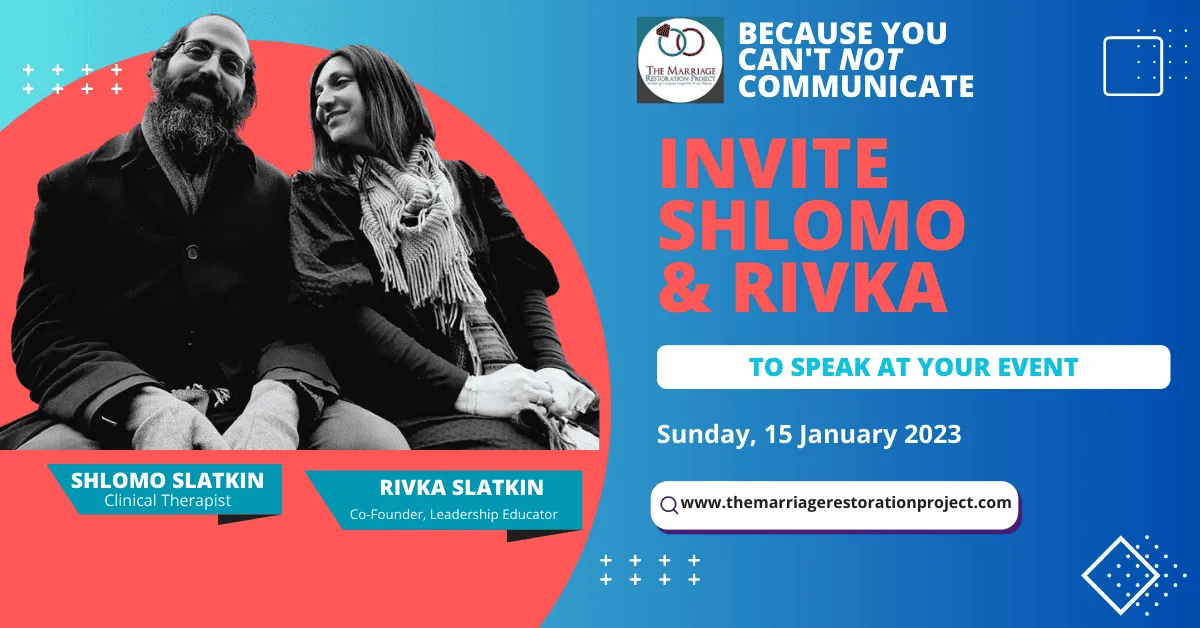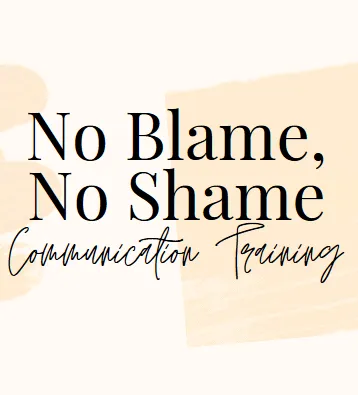Let’s talk about something that happens in all relationships at one point or another – feeling frustrated with your spouse.
Communicating Effectively Using Imago
It’s perfectly normal. Whether it’s how many times each of you cook dinner over the week, messes left uncleaned or the bigger stuff like feeling undervalued or overlooked, these frustrations can really add up.
Consciously Communicating Without Avoidance
The key isn’t avoiding these feelings; it’s about how you communicate them effectively to your partner without starting a war in your living room.
The Power of Imago Dialogue
Enter the Imago Dialogue. It’s a communication tool designed specifically for moments like these. Developed as part of Imago Relationship Therapy, it’s all about turning what could be a conflict into an opportunity for connection and understanding. Now, if you’re imagining some complicated therapy jargon, don’t worry. It’s actually pretty straightforward and, believe it or not, really practical.
Become More Vulnerable & a Better Listener
The beauty of the Imago Dialogue is that it helps both of you really hear and understand where the other is coming from. It’s not about pointing fingers or winning an argument. It’s about sharing your feelings and needs in a way that your partner can hear, understand, and respond to without feeling attacked or defensive.
Turning Conflicts Into Opportunities
So, if you’re curious about turning those frustrating moments into chances to grow closer and strengthen your relationship, that’s what we’ll be looking at in this blog post. Let’s explore how the Imago Dialogue can make a big difference in how you and your spouse communicate. Trust me, it’s a game changer.
Understanding the Imago Dialogue
Alright, let’s get into what the Imago Dialogue actually is.
Imagine it as a bridge that helps you and your partner move from misunderstanding and frustration to a place where you both feel understood and connected. It’s a structured way to talk about things that bother you without the conversation blowing up into an argument.
What Makes It Different
You might be thinking, “We talk all the time, how is this any different?”
Well, the Imago Dialogue is special because it’s all about how you talk to each other. It focuses on listening without interrupting, understanding without judging, and connecting on a deeper level. It’s not your average daily chat. It’s more like a ritual that helps you really tune in to each other.
The Goals
The whole point of using the Imago Dialogue is to achieve three things:
- Understanding: Really getting where your partner is coming from, even if you don’t agree with them.
- Empathy: Feeling with your partner, sharing in their emotions, and letting them know they’re not alone.
- Connection: Strengthening your bond by navigating through tough conversations together.
Think of it as teamwork. You’re working together to tackle the issue, not each other. It’s about saying, “Hey, we’re on the same team here. Let’s figure this out together.”
It’s Not Just About Talking
The Imago Dialogue isn’t just about the words you say. It’s about how you say them and how you listen. It’s a whole-body experience. You’re encouraged to maintain eye contact, keep your body language open, and really be present with each other. This isn’t about quickly getting your point across; it’s about creating a moment where both of you feel safe, heard, and valued.
In the next part, we’ll dive into the nitty-gritty of how the Imago Dialogue works – the steps, the process, and how to make it part of your relationship toolbox. Stick around; it’s going to be worth it.
The Three Steps of Imago Dialogue
Getting down to the brass tacks, the Imago Dialogue breaks down into three crucial steps: Mirroring, Validation, and Empathy. Mastering these can turn those tough talks into opportunities for growth. Let’s unpack each step:
1. Mirroring
Imagine this: Your partner shares something that’s been bugging them, and instead of jumping in with your two cents, you simply reflect back what you heard them say. That’s mirroring. It goes something like, “So, if I’m hearing you right, you’re feeling…” This does a couple of powerful things:
- Makes Your Partner Feel Heard: It’s a way of saying, “I’m listening. I’m here with you.” When we mirror, we’re not adding our story or fixing anything. We’re just holding up a mirror to their words, which can be incredibly validating.
- Validates Their Feelings: It’s not about agreeing with everything they say but acknowledging that their feelings are valid. It’s like saying, “Your feelings make sense.”
2. Validation
Once you’ve mirrored your partner’s words, the next step is validation. This is where you acknowledge their perspective. It might sound like, “It makes sense you feel that way because…” This isn’t about agreeing but understanding. It’s seeing the world through their eyes and letting them know their view is reasonable.
- Acknowledges the Partner’s Perspective: It tells your partner, “I get where you’re coming from.” Even if you see things differently, you’re acknowledging their feelings and experiences are real to them.
- De-escalates Conflict: When people feel understood, the defensive walls come down. Validation can turn a heated exchange into a moment of connection.
3. Empathy
The final step is empathy, which is all about feeling with your partner. After mirroring and validating, you try to step into their shoes and connect with the emotions they’re expressing. It’s saying, “I can imagine how that might make you feel…”
- Understanding Your Partner’s Emotions: This is where you try to really feel what your partner is feeling. It’s about connecting on an emotional level, which can be incredibly healing.
- Deepens Connection and Healing: Empathy shows your partner they’re not alone in their feelings. This shared emotional experience can bring you closer together and help heal old wounds.
By moving through these steps—mirroring, validation, and empathy—you create a safe space for both of you to share openly and connect deeply. It’s about turning what could be a battleground into a meeting ground where both of you feel seen, understood, and cared for. Next, we’ll look at some practical tips for making the Imago Dialogue work for you.
This is where it gets really interesting!
Practical Tips for Implementing the Imago Dialogue
Now that we’ve laid out the steps of the Imago Dialogue, you might be wondering how to put this into practice in your daily life. Here are some hands-on tips to help you get started and make the most out of this powerful communication tool. Don’t forget to subscribe to updates on our blog for more relationship tips and advice.
Setting the Stage
- 1. Choose the Right Time: Find a time when both of you are not rushed or stressed. This ensures you’re both mentally and emotionally present.
- 2. Create a Comfortable Space: Sit face-to-face in a quiet, comfortable place where you won’t be interrupted. This physical setup fosters intimacy and focus.
Getting Started
- 1. Initiate Gently: Start the conversation with an intention to understand and connect, not to win an argument. You might say, “Can we talk about something that’s been on my mind? I really want to understand your perspective.”
- 2. Use “I” Statements: Begin your part of the dialogue by speaking from your own experience, using “I” statements like “I feel” or “I need.” This reduces defensiveness from the start.
During the Dialogue
- 1. Stay Focused on Mirroring: Resist the urge to plan your response while your partner is speaking. Focus on listening and mirroring back what you heard, to make sure you’ve understood correctly.
- 2. Be Patient: This process can feel a bit slow at first, but that’s okay. The aim is to deeply understand and connect, not to rush through the conversation.
- 3. Ask for More: If you’re the listener, encourage your partner to share more by asking, “Is there more about that?” This shows you’re truly engaged and interested.
Keeping the Connection
- 1. Practice Regularly: The more you practice, the more natural it will feel. Try to use the Imago Dialogue for more than just conflicts; it’s great for sharing positive feelings and experiences, too.
- 2. Be Kind to Yourselves: It’s normal to stumble as you’re learning this new way of communicating. Be patient with yourselves and each other. Remember, it’s a journey.
When You Get Stuck
- 1. Take a Break: If emotions run high or you find yourselves stuck in old patterns, it’s okay to take a break and revisit the conversation later.
- 2. Seek Support: If you’re finding it difficult to use the Imago Dialogue on your own, consider seeking out a workshop or a therapist trained in Imago Relationship Therapy for guidance.
Implementing the Imago Dialogue into your relationship is like learning a new dance. It might feel awkward at first, but with practice, you’ll find a rhythm that works for both of you. This way of communicating can transform not just how you talk about frustrations, but how you connect on every level. It’s about building a relationship where both partners feel valued, understood, and deeply connected. So, give it a try, be patient with the process, and watch your relationship grow stronger day by day.
Deepening Your Connection: The Next Steps in Your Imago Dialogue Journey
As we wrap up our exploration of the Imago Dialogue, remember that mastering this approach to communication is a journey, not a sprint. It’s about building a deeper, more meaningful connection with your spouse, one conversation at a time. The skills you’ve learned here are just the beginning. Practicing these techniques regularly can transform your relationship, turning conflicts into moments of intimacy and understanding.
However, there’s so much more to discover and learn about Imago Relationship Therapy. If you’ve found this glimpse into the Imago Dialogue inspiring, we encourage you to dive deeper. Our immersive marriage intensive retreats and the tropical couples’ getaway retreats in Costa Rica are designed to not only teach you the Imago Dialogue but also to immerse you in an environment where you can practice and deepen your understanding of it. These retreats offer a unique opportunity to explore this powerful tool in a supportive, guided setting, surrounded by the beauty and tranquility of Costa Rica.
Attending an intensive marriage retreat or a tropical retreat can provide you with personalized guidance and support as you navigate the intricacies of your relationship. It’s an investment in your marriage and your shared happiness. Whether you’re looking to address specific challenges or simply want to enhance your communication skills, Imago Relationship Therapy has the tools you need.
So, why not take the next step? Explore more resources on Imago Relationship Therapy and consider enrolling in one of our retreats. It’s an opportunity to strengthen your bond, improve your communication, and create a more loving and fulfilling relationship. Remember, the strongest relationships are built on a foundation of understanding, empathy, and continuous growth.
Contact Us
Schedule a free 30 minute clarity call with Rabbi Shlomo Slatkin or request an appointment online. Check out the upcoming couples therapy retreats in Costa Rica and Baltimore MD by The Marriage Restoration Project.





